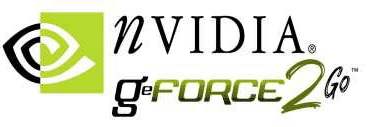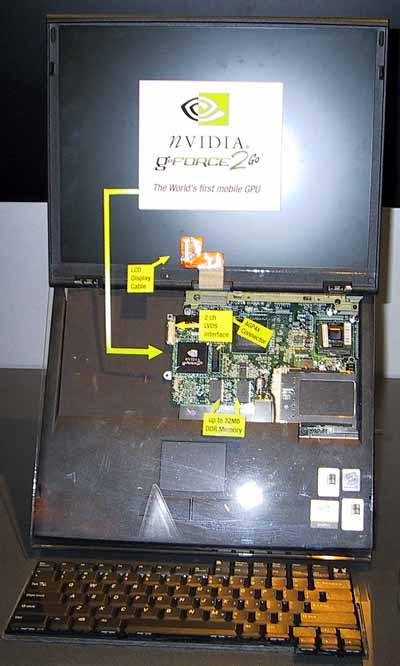NVIDIA is still flying high
Out of all four manufacturers we’re talking about in this article, NVIDIA had by far the largest presence at Comdex. Their suite was crowded with demos, NVIDIA employees, and you could definitely tell that they had been enjoying quite a strong year.
Indeed they have been, the GeForce GTS was launched without the slightest hint of competition from anyone, the GeForce2 GTS is selling extremely well, and the GeForce2 MX will continue to enjoy incredible amounts of popularity for quite some time too. Although the NV20 didn’t make it out as NVIDIA’s fall product, the part itself seems to be doing quite well and card vendors are expecting samples in December. With the part sampling next month, we can expect it to hit shortly thereafter.
Out of the three manufacturers that will be launching DX8 parts early next year, it may be that NVIDIA is first to the plate, followed by ATI and then 3dfx.
While there was very little that NVIDIA was willing to talk about publicly regarding the NV20 it won’t be long before you start seeing the pieces of the puzzle fit together.
 What
NVIDIA was more than happy to talk about however, was their first mobile solution,
the GeForce2 Go.
What
NVIDIA was more than happy to talk about however, was their first mobile solution,
the GeForce2 Go.
The GeForce2 Go, which we should start seeing in laptops in mid to late Q1-2001, is essentially a lower clocked version of the GeForce2 MX. It will still feature the same two pixel pipes as the GeForce2 MX and will be able to process two textures per clock, giving it a 4 Texels per clock fill rate. The only difference will be that the GeForce2 Go will be clocked at 143MHz instead of the 175MHz clock of the GeForce2 MX. Since the GeForce2 MX is memory bandwidth limited, decreasing the core clock shouldn’t hurt the performance too much.
The GeForce2 Go memory clock is set at 166MHz however, just like with the Mobility Radeon, its performance will be largely dependent on the type of memory bus implemented by the notebook manufacturers. The GeForce2 Go can be used with a 32, 64 or 128-bit memory bus, however it is highly unlikely that we will see any 128-bit implementations. Instead, manufacturers will probably either choose to use a 32-bit DDR implementation or a 64-bit SDR implementation which will cripple the GeForce2 Go’s performance that would otherwise be almost identical to the performance of a desktop GeForce2 MX.











0 Comments
View All Comments